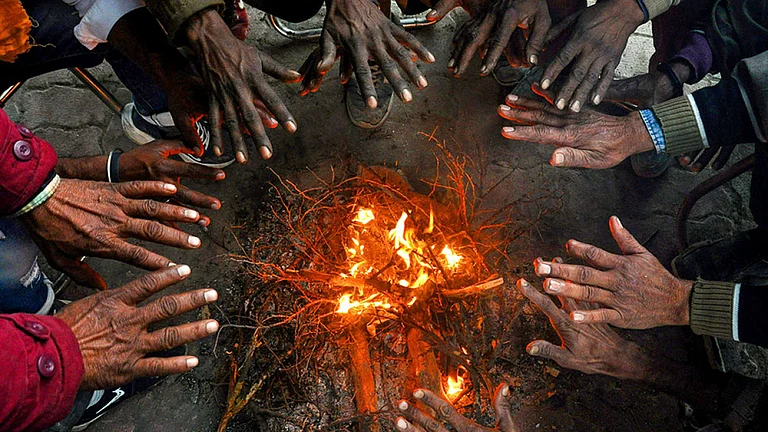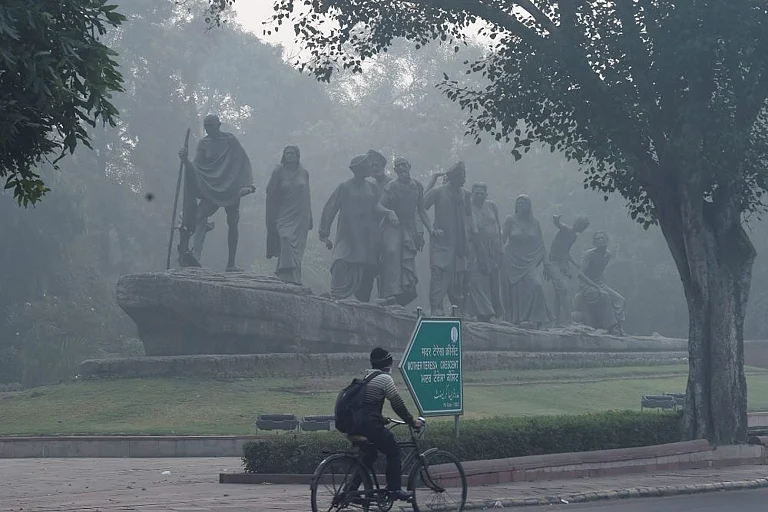
Punjab faces severe to hazardous AQI levels 297-326, with PM2.5 at 205-209 µg/m³, PM10 at 263-271 µg/m³, exceeding safe limits significantly.
IMD forecasts a minimum temperature decline of 2-4°C over the next week; shallow to moderate fog from November 24 onwards; cold intensifying through November 28
Amritsar is worst at AQI 342; Chandigarh AQI 290 is severe; wind speeds are gentle 6 km/h, contributing to stagnant air conditions, trapping pollutants.
Residents are advised to wear N95 masks outdoors, air purifiers indoors; vulnerable populations require additional health precautions; schools should monitor AQI levels.
Punjab is experiencing severe air pollution combined with intensifying cold conditions as November 22 brings hazardous AQI levels alongside declining temperatures. The Air Quality Index across Punjab has surged to alarming levels between 297-326, placing the state firmly in the severe to hazardous category with fluctuations throughout the day. The India Meteorological Department forecasts that cold will gradually intensify with minimum temperatures declining 2-4 degrees Celsius over the next week, coupled with shallow to moderate fog formation from November 24 onwards. Current pollution measurements show PM2.5 at 205-209 micrograms per cubic meter and PM10 at 263-271 micrograms per cubic meter, far exceeding safe thresholds established by health authorities. Despite temporarily sunny skies with daytime temperatures around 19-23 degrees Celsius, nighttime conditions remain harsh with persistent pollution creating dual health challenges for vulnerable populations.
Regional Air Quality and Temperature Distribution
Amritsar reports one of Punjab's worst air quality readings at AQI 342 in the hazardous category, with PM2.5 at 242 micrograms per cubic meter and PM10 at 311 micrograms per cubic meter. The state capital, Chandigarh, maintains severe AQI levels around 290, while Ludhiana and surrounding industrial regions record similarly hazardous conditions.
Minimum temperatures currently range between 9-12 degrees Celsius across most districts, with maximums settling around 23-26 degrees Celsius. Wind speeds remain gentle at approximately 6 kilometers per hour, contributing to stagnant air conditions that trap pollutants and prevent atmospheric ventilation. Humidity levels hover between 17-19 percent across regions, creating dry conditions despite cold intensification.
Health Advisory and Extended Forecast
The extended weather forecast through November 28 indicates continued deterioration of air quality with no significant improvement expected until rainfall arrives, potentially around late November or early December. Residents are strongly advised to wear N95 masks outdoors, utilize air purifiers indoors, and limit outdoor exposure, particularly vulnerable populations, including children, elderly citizens, and those with respiratory conditions. The combination of severe pollution and declining temperatures creates compounded health risks requiring immediate protective measures.
Schools and offices should monitor AQI levels closely, potentially implementing hybrid or closure protocols if hazardous conditions persist. Farmers should prepare for cold-related agricultural challenges, protecting crops and livestock through appropriate measures during the coldest forecast period.










_.jpg?auto=format%2Ccompress&fit=max&format=webp&w=768&dpr=1.0)
















